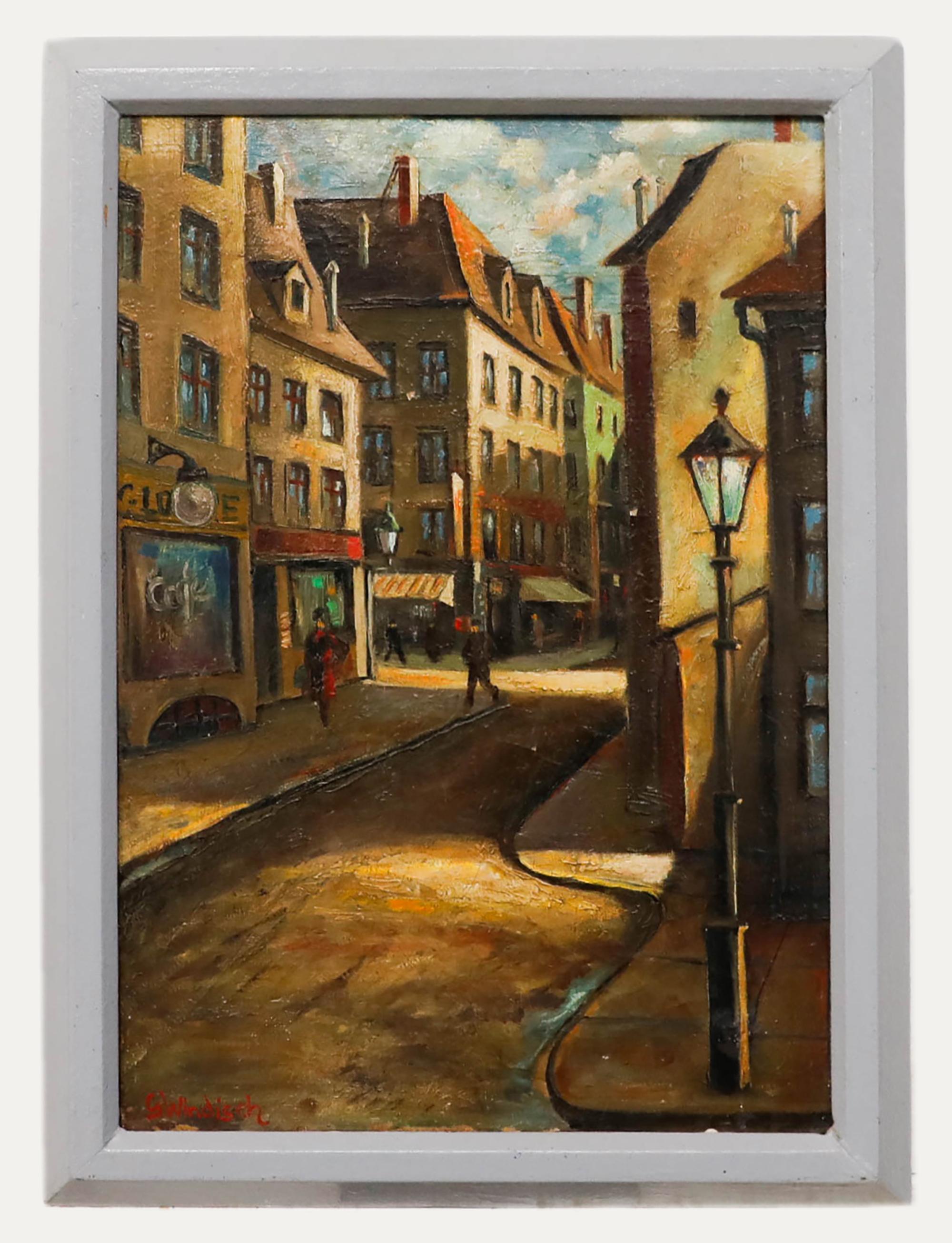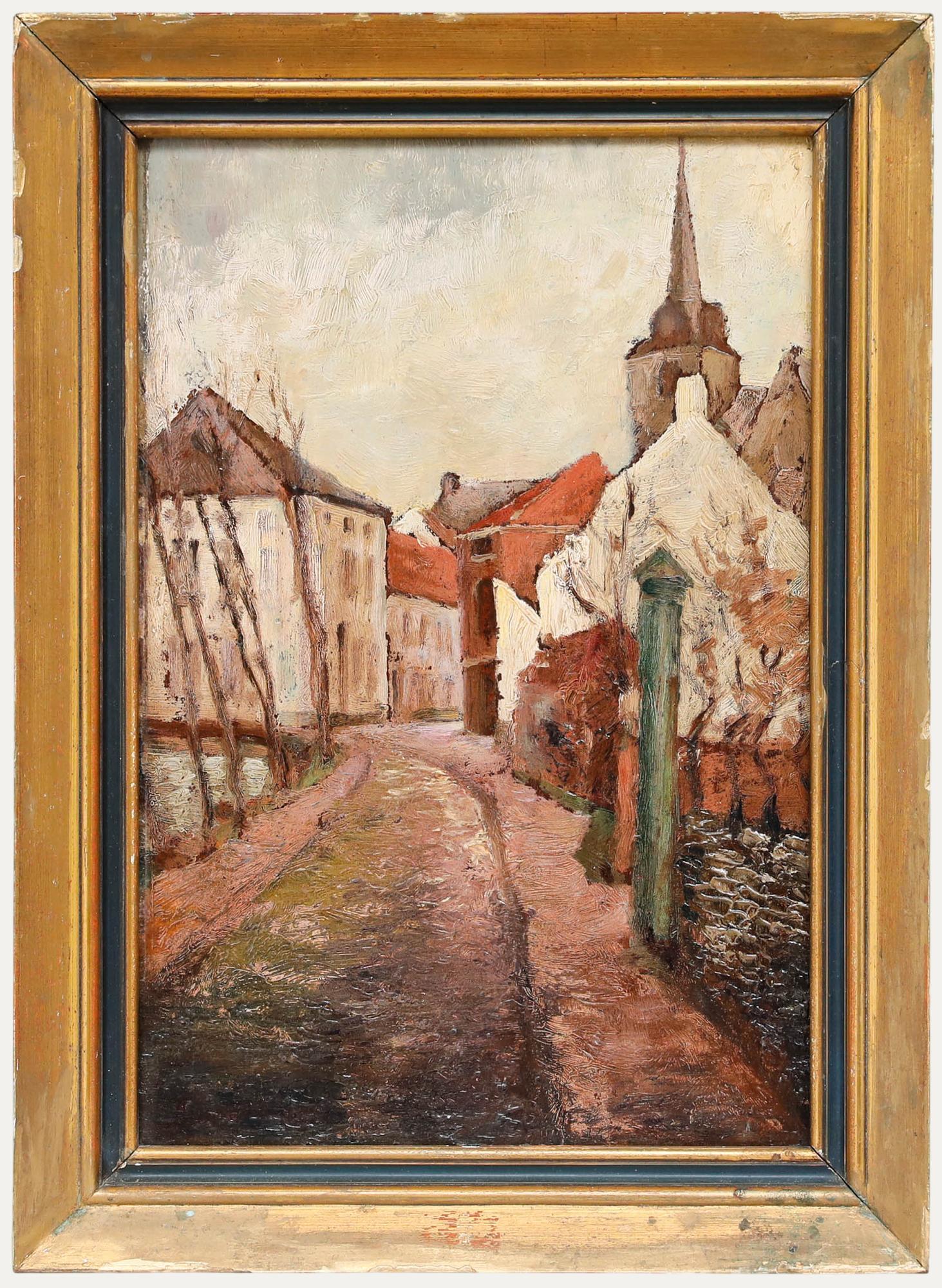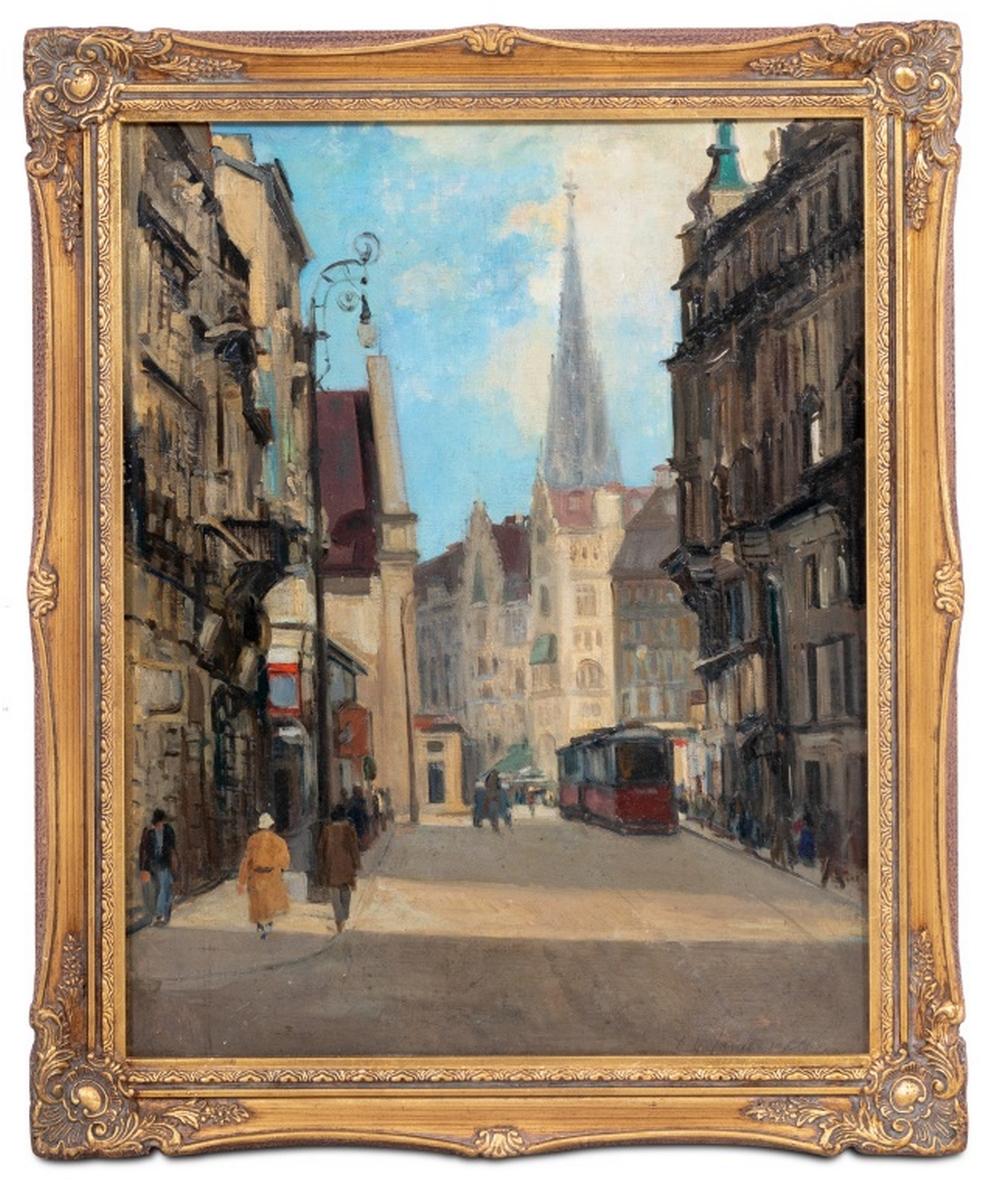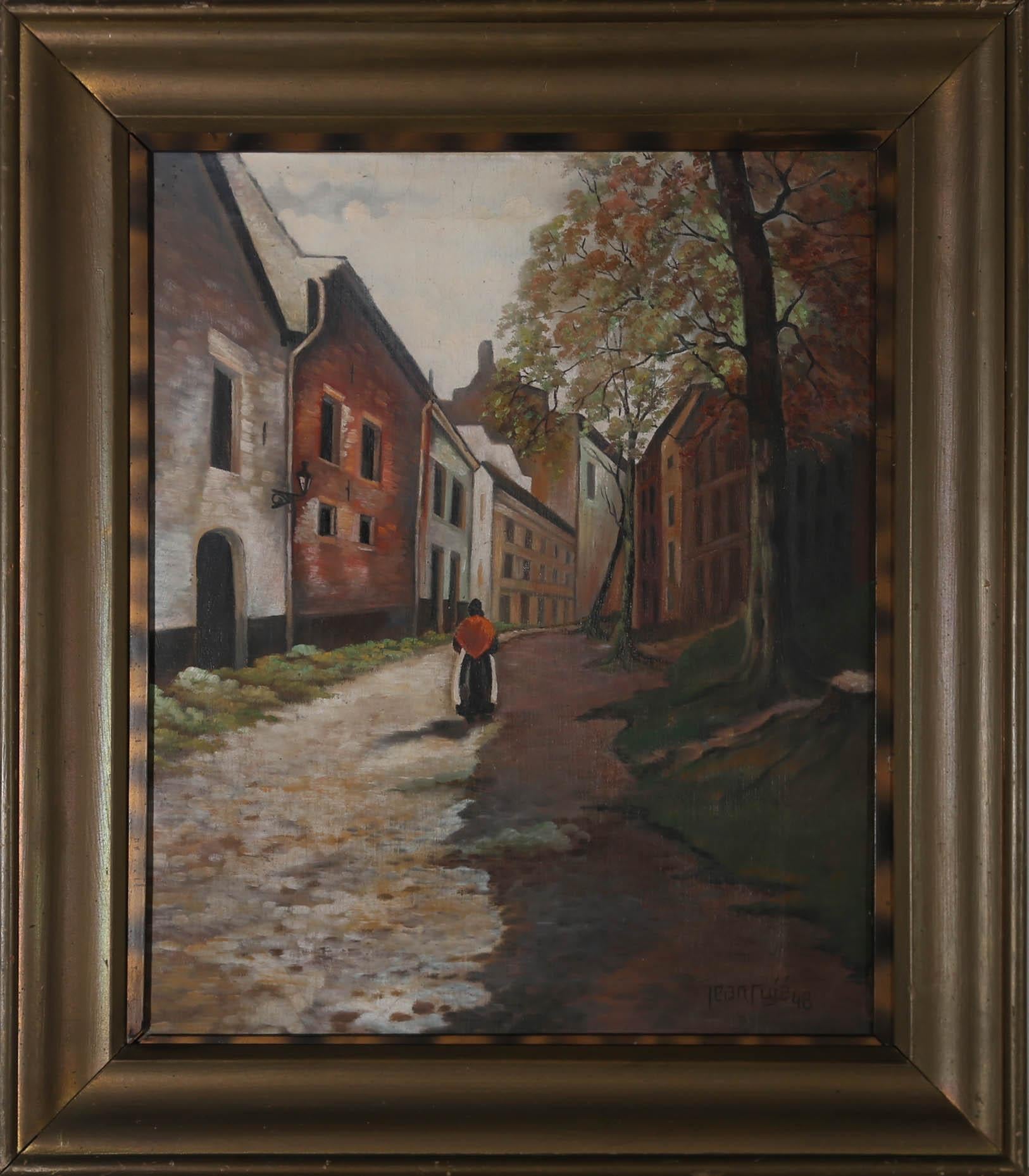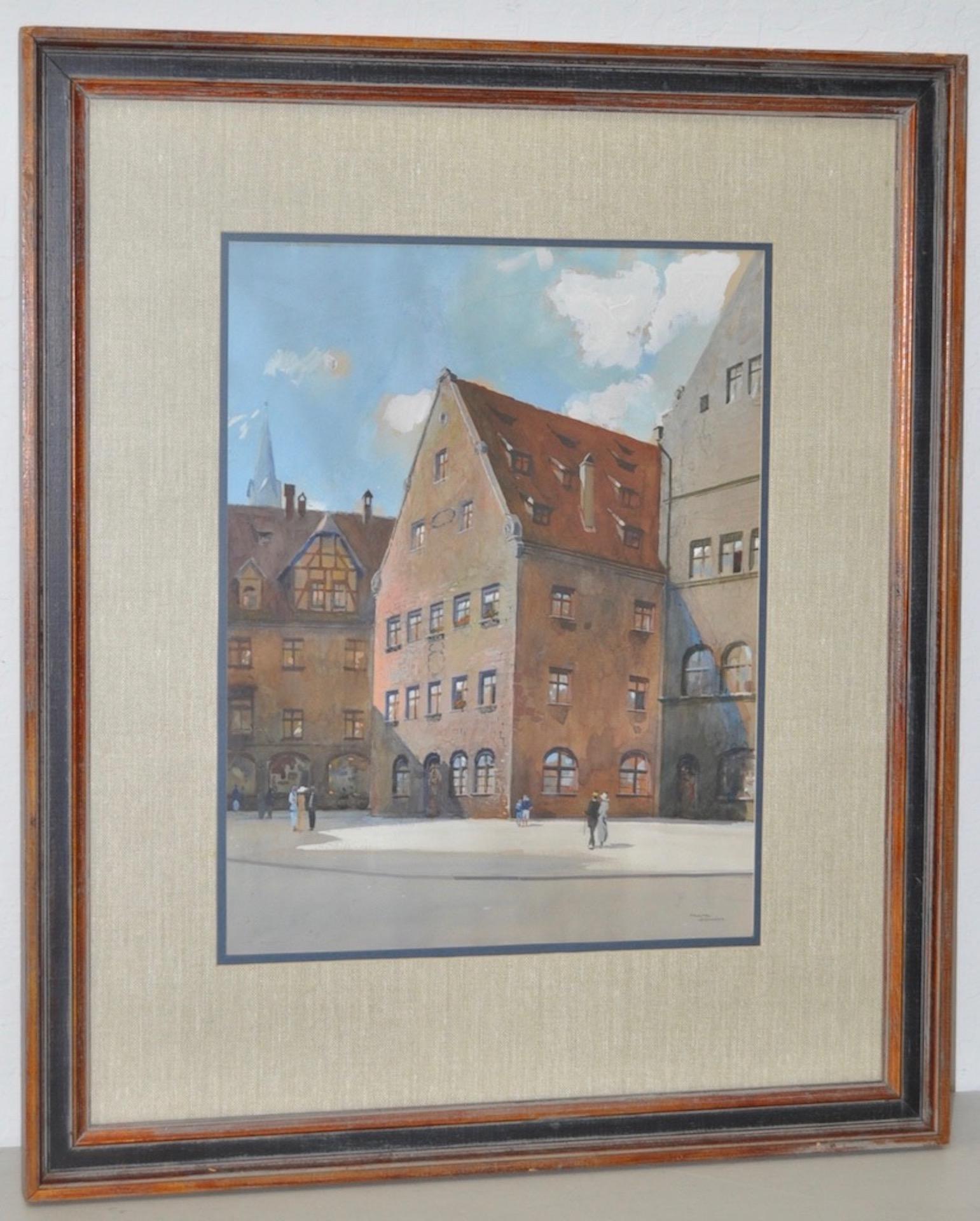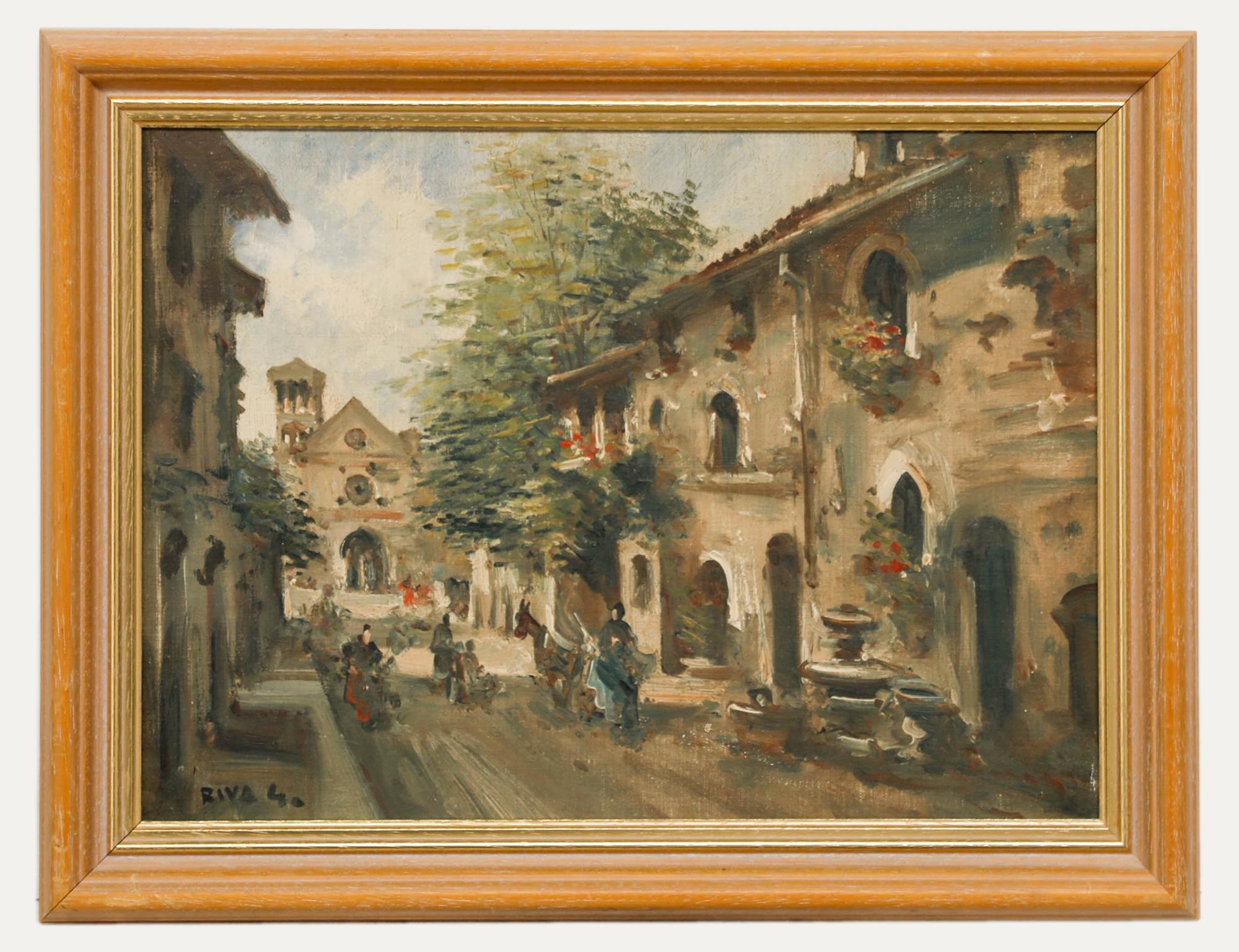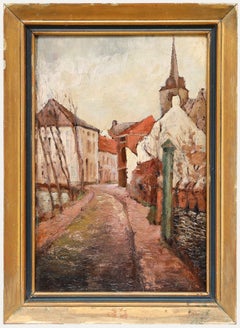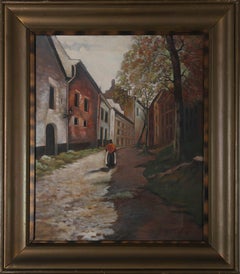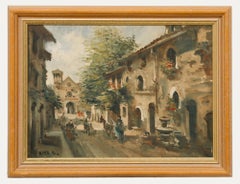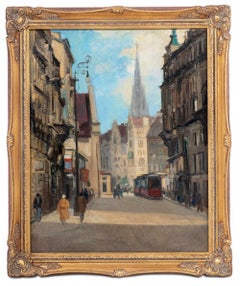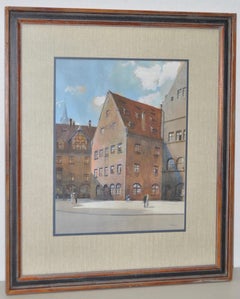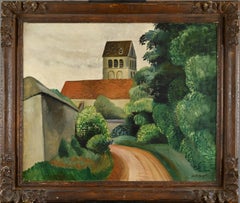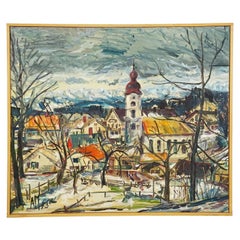Items Similar to Erich Krause (1886-1954) - German School 1942 Oil, A Street in Meersburg
Want more images or videos?
Request additional images or videos from the seller
1 of 7
UnknownErich Krause (1886-1954) - German School 1942 Oil, A Street in Meersburg1942
1942
$560.80
$70120% Off
£421.29
£526.6120% Off
€485.81
€607.2720% Off
CA$778.18
CA$972.7320% Off
A$864.73
A$1,080.9220% Off
CHF 453.13
CHF 566.4120% Off
MX$10,604.41
MX$13,255.5120% Off
NOK 5,779.40
NOK 7,224.2520% Off
SEK 5,437.05
SEK 6,796.3120% Off
DKK 3,625.91
DKK 4,532.3920% Off
Shipping
Retrieving quote...The 1stDibs Promise:
Authenticity Guarantee,
Money-Back Guarantee,
24-Hour Cancellation
About the Item
German School, oil on canvas. A street in Meersburg near Lake Constance, with the upper gate drawing the viewer's gaze further into the scene. Presented in a cream-coloured frame. Signed to the lower left and dated '42. On board.
- Creation Year:1942
- Dimensions:Height: 28.75 in (73 cm)Width: 24.61 in (62.5 cm)
- Medium:
- Period:
- Condition:The condition is typical for a picture of this age, including some surface discolouration and dirtiness to the oil. There is a dark linear mark in the lower right-hand corner and small scuffs to the frame.
- Gallery Location:Corsham, GB
- Reference Number:Seller: sj7461stDibs: LU881315394942
About the Seller
4.9
Gold Seller
Premium sellers maintaining a 4.3+ rating and 24-hour response times
Established in 2010
1stDibs seller since 2018
1,290 sales on 1stDibs
Typical response time: 4 hours
- ShippingRetrieving quote...Shipping from: Corsham, United Kingdom
- Return Policy
Authenticity Guarantee
In the unlikely event there’s an issue with an item’s authenticity, contact us within 1 year for a full refund. DetailsMoney-Back Guarantee
If your item is not as described, is damaged in transit, or does not arrive, contact us within 7 days for a full refund. Details24-Hour Cancellation
You have a 24-hour grace period in which to reconsider your purchase, with no questions asked.Vetted Professional Sellers
Our world-class sellers must adhere to strict standards for service and quality, maintaining the integrity of our listings.Price-Match Guarantee
If you find that a seller listed the same item for a lower price elsewhere, we’ll match it.Trusted Global Delivery
Our best-in-class carrier network provides specialized shipping options worldwide, including custom delivery.More From This Seller
View AllGerhard Windisch (1895-1961) - Framed Oil, Early Morning in the City
Located in Corsham, GB
Gerhard Windisch (1895-1961). City view, oil on canvas. Signed in the lower left. Well presented in a painted grey frame.
Category
Mid-20th Century Landscape Paintings
Materials
Oil
$560 Sale Price
20% Off
Continental School Early 20th Century Oil - A Winter Street Scene
Located in Corsham, GB
This charming early 20th century painting depicts a quaint village street lined with rustic buildings, dominated by a prominent church spire in the background. Unsigned. Well present...
Category
20th Century Landscape Paintings
Materials
Oil
Jean Cuje - Framed 1948 Oil, Walking the Street
Located in Corsham, GB
This vibrant perspective scene depicts a lone figure walking down a quiet continental street on a cloudy day. The artist has signed and dated to the lower right, and the oil has been...
Category
Mid-20th Century Landscape Paintings
Materials
Oil
$353 Sale Price
20% Off
Riva - Spanish School 1940 Oil, Spanish Street in Summer
Located in Corsham, GB
Signed 'Riva' and dated 1940 in the lower left corner. Presented in a wooden frame with a gilt inner window. On board.
Category
Mid-20th Century Landscape Paintings
Materials
Oil
$342 Sale Price
20% Off
Edmond van Offel (1871-1959) - Framed Mid 20th Century Oil, City of Amiens
By Ali Alışır
Located in Corsham, GB
French street scene in oil. The city of Amiens with gothic cathedral and belfry dominating the sky. Well-presented in a gilt-effect frame with ripple moulded edge. Signed by the arti...
Category
20th Century Landscape Paintings
Materials
Oil
20th Century Oil - Old Town of Constance
Located in Corsham, GB
Impressionist, oil on panel. The medieval alleyways of Constance with historic cathedral and bell tower visible in the background. Unsigned.
Category
20th Century Landscape Paintings
Materials
Oil
You May Also Like
Austrian School Vienna Street Scene Oil on Board
Located in Astoria, NY
Austrian School, Vienna Street Scene, Oil on Board, 20th century, with St. Stephen's Cathedral in the distance, signed illegibly lower right, giltwood frame. Image: 20" H x 16" W; fr...
Category
20th Century Impressionist Paintings
Materials
Oil, Panel
Franz Schmidt (1884-1951) "Nuremberg, Germany" Original Gouache on Paper c.1930s
Located in San Francisco, CA
Franz (Professor) Schmidt (1884-1951) Original Gouache on Paper c.1930s
Fine impressionist painting of a German village landscape c.1930s.
Painting di...
Category
Early 20th Century Impressionist Landscape Paintings
Materials
Gouache
La rue du village
By Léopold Survage
Located in LE HAVRE, FR
Léopold SURVAGE (1879-1968)
La rue du village
Oil on canvas
Size: 50 x 61 cm
Signed lower right
Provenance: Private collection in Normandy.
Oil on canvas in good condition.
Small...
Category
Early 1900s Impressionist Figurative Paintings
Materials
Canvas, Oil
Vintage Oil Painting of a Bavarian Village, Alexander Michael 1973
Located in Berghuelen, DE
Vintage Oil Painting of a Bavarian Village, Alexander Michael 1973
A framed oil painting depicting the view to the Bavarian village Tanning with a Baroque church, surrounded by farm...
Category
Vintage 1970s German Other Paintings
Materials
Canvas, Wood, Paint
Street Scene Oil Painting Circa 1930s
By Albert Abramovitz
Located in Surfside, FL
Albert Abramovitz (1879-1963), born in Riga, Latvia, on January 24, 1879. He studied art at the Imperial Art School in Odessa and at the Grande Chaumière in Paris. In Paris, he becam...
Category
Early 20th Century American Impressionist Figurative Paintings
Materials
Canvas, Oil
Antique European Framed Street Scene Signed Landscape Oil Painting
Located in Buffalo, NY
Antique impressionist street scene oil painting. Oil on canvas. Framed. Signed. In excellent original condition. Handsomely framed in a giltwood molding. Excellent condition, re...
Category
1940s Impressionist Landscape Paintings
Materials
Oil, Canvas
More Ways To Browse
Vintage Constance
1911 Antiques
Bohemian Club
Hugh London
Impressionist Painting With Pink House
Jenkins Oil Painting
Old Sailing
Paintings Of Red Barns
Pebble Beach
Place Du Tertre
Signac Paul
Landscape Paintings East Hampton
Oil Paint Yachts
Walking Horse
Holland Painting Of Boats
Paintings Signed Gerard
Pier Posts
Pont Aven
